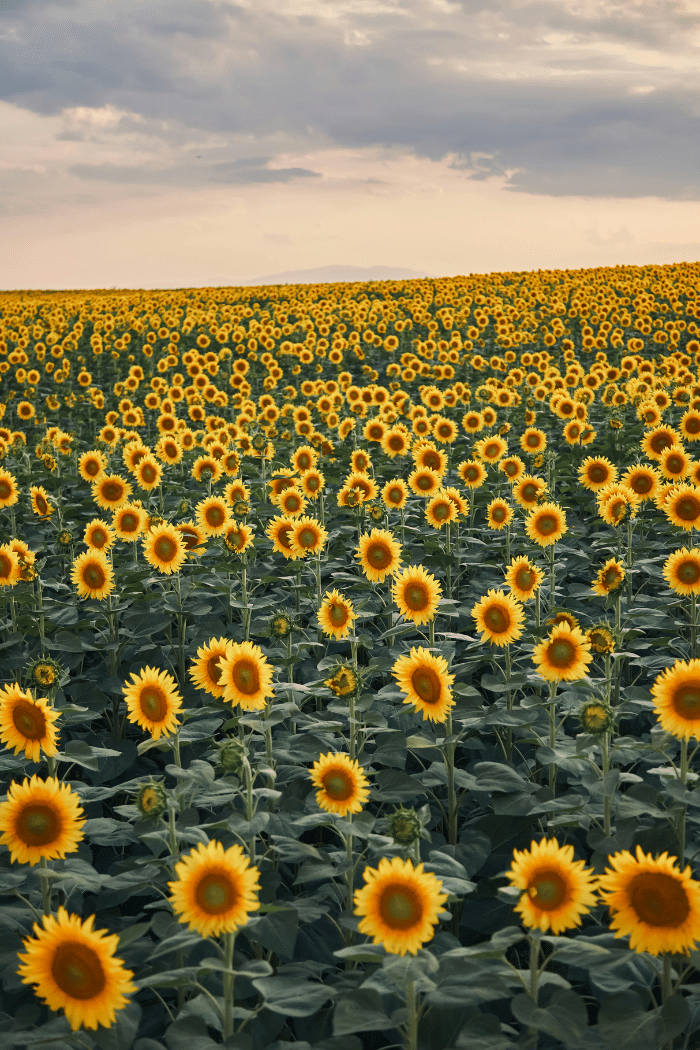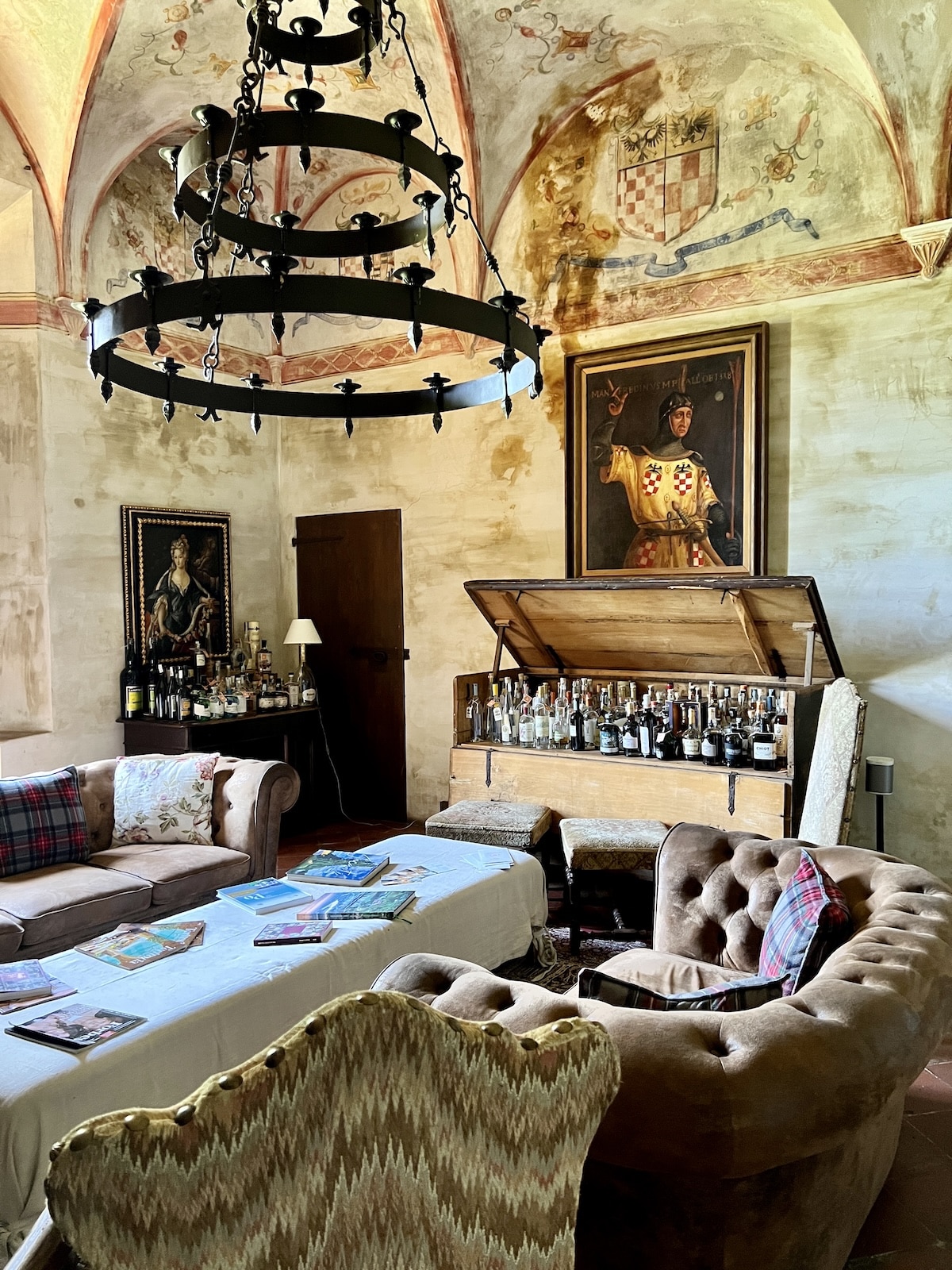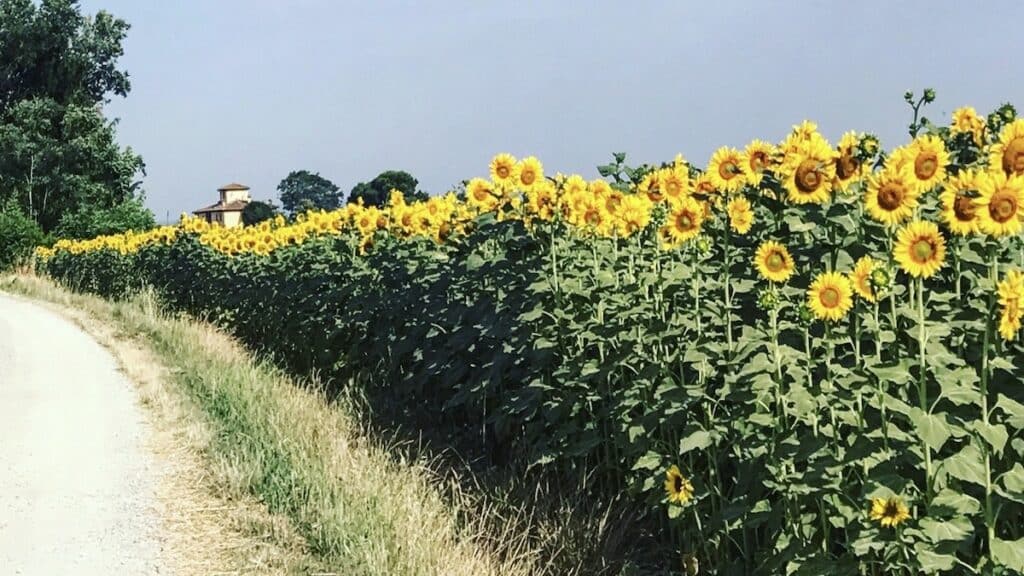
Tuscany transforms dramatically with each season, and the “best” time to visit depends entirely on what kind of experience speaks to your soul.
Are you dreaming of participating in the grape harvest? Wandering medieval villages without crowds? Hunting for truffles when the earth reveals its most prized treasures?
As someone who splits my time between the US and Lucca, I’ve experienced Tuscany in every season—not as a tourist, but as a resident.
This guide reflects insights from local winemakers, restaurant owners, and neighbors who’ve shared their wisdom about when Tuscany truly shines.
Whether you’re planning a year in advance or dreaming of a last-minute escape, you’ll discover exactly when Tuscany’s rhythm aligns with your travel desires.
Tuscany at a Glance: Monthly Overview
| Month | Temperature | Crowds | Prices | Highlight | Best For |
|---|---|---|---|---|---|
| January | 3-12°C (37-54°F) | Low | $ | Black truffle season | Truffle lovers, budget travelers |
| February | 4-13°C (39-55°F) | Low | $ | Carnevale celebrations | Culture seekers, authentic experiences |
| March | 7-16°C (45-61°F) | Low-Medium | $$ | Wildflowers emerge | Early birds avoiding crowds |
| April | 10-19°C (50-66°F) | Medium | $$ | Spring festivals begin | Comfortable weather seekers |
| May | 14-23°C (57-73°F) | Medium | $$ | Perfect hiking weather | Active travelers, photographers |
| June | 18-28°C (64-82°F) | High | $$$ | Outdoor dining season | Festival lovers, families |
| July | 21-32°C (70-90°F) | Very High | $$$ | Palio di Siena | Event enthusiasts (book early!) |
| August | 21-33°C (70-91°F) | Very High | $$$ | Village food festivals | Beach lovers, social travelers |
| September | 18-27°C (64-81°F) | Medium-High | $$$ | Grape harvest begins | Wine enthusiasts, couples |
| October | 12-22°C (54-72°F) | Medium | $$ | Peak wine harvest | Food/wine lovers (top choice!) |
| November | 7-15°C (45-59°F) | Low | $ | White truffle season | Truffle fanatics, authenticty seekers |
| December | 4-12°C (39-54°F) | Low | $ | Christmas markets | Holiday lovers, budget travelers |
Spring in Tuscany (March – May)

Spring brings Tuscany to life with wildflowers, green hills, and comfortable temperatures (15-23°C/59-73°F by late spring). This shoulder season offers fewer crowds and moderate pricing—ideal for travelers who prefer comfortable walking conditions without summer’s heat.
Food & Wine: Market stalls overflow with artichokes, fava beans, wild asparagus, and fresh pecorino. Vineyards are less crowded, and winemakers have time for intimate tastings. Late May is the time for Cantine Aperte (Open Wineries), where wineries across Tuscany open their doors for tastings, tours, and special experiences, allowing visitors to meet winemakers and taste local wines.
Events: Florence’s Maggio Musicale Fiorentino, a prestigious event featuring operas, concerts, ballets, and prose performances held mainly at the Teatro del Maggio Musicale Fiorentino (Begins in April). Lucca’s Murabilia garden festival (May). Various local food sagre (festivals) highlighting seasonal produce like strawberries, cheeses, artichokes and mushrooms.
Insider Tip: Visit the last two weeks of April for the sweet spot between spring blooms and early summer warmth, after Easter crowds disperse.
Best for: Couples seeking romance | Food lovers | Active travelers | Photographers | Those preferring moderate temperatures
Summer in Tuscany (June – August)

Summer pulses with energy—piazzas fill with outdoor tables, festivals explode in village squares, and Tuscany’s social life peaks.
June offers gentle warmth (20-28°C/68-82°F), while July-August bring genuine heat (25-35°C/77-95°F). Cities can feel like ovens at midday, though evenings cool beautifully.
If heat sensitivity or mobility are considerations, focus on higher elevation towns like Cortona, plan indoor activities during midday, and schedule explorations for morning and evening.
Food & Wine: Peak summer produce—tomatoes, zucchini flowers, stone fruits. Gelato becomes a cultural ritual. Evening meals move outdoors, and crisp whites and rosés shine. Wineries offer evening tastings as the heat fades.
Events: The Palio di Siena (July 2 & August 16)—an intense medieval horse race where grown men weep when their contrada wins. Puccini Festival, and countless village sagre celebrating local specialties.
Important note: Many family-run restaurants and shops close for ferragosto (mid-August vacation)—cities remain open, but countryside businesses often take their annual break.
Best for: Families on summer holidays | Festival enthusiasts | Beach lovers | Those who love vibrant social atmospheres
Autumn in Tuscany (September – November)
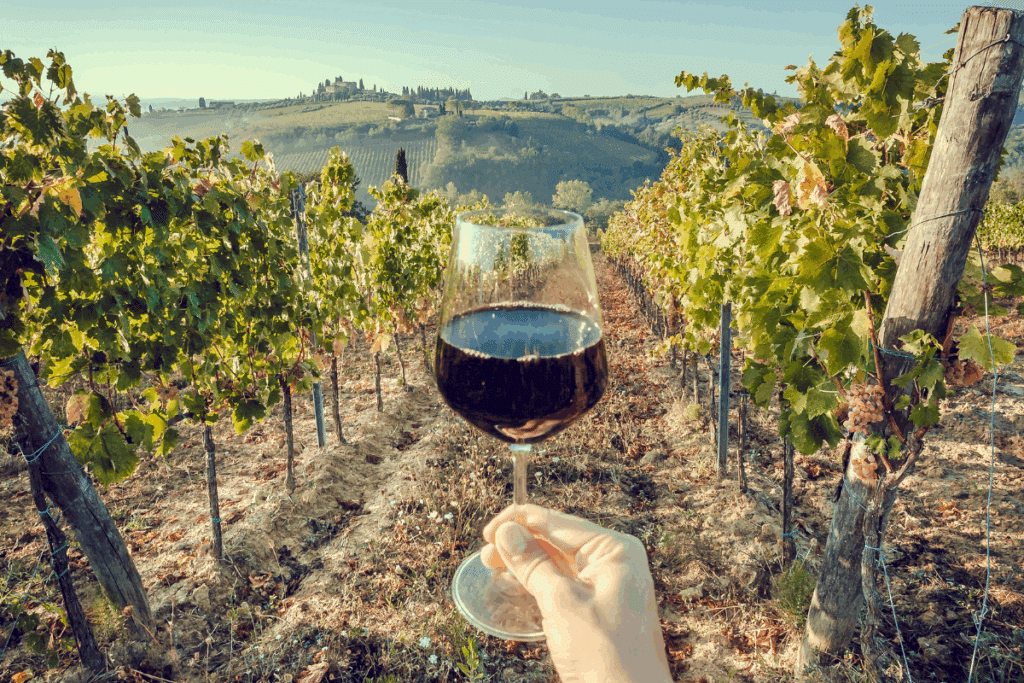
Ask locals when to visit, and most answer without hesitation: autumn.
This is when Tuscany’s agricultural soul is on full display, when centuries-old harvest traditions continue, and the land offers its most generous gifts.
September extends summer’s warmth (18-27°C/64-81°F) while crowds thin. October brings crisp mornings and mild afternoons (12-22°C/54-72°F) with incomparable golden light. November grows cooler (8-15°C/46-59°F) with morning mist and some rainy days.
Food & Wine: This is paradise for food and wine lovers. Late September through October brings vendemmia (grape harvest)—you can pick grapes alongside families who’ve made wine for generations, then sit down to lunch from their garden. Many agriturismos offer harvest experiences you can enjoy at your own pace.
November shifts to olive harvest. Visit frantoi (olive mills) to taste warm, fresh-pressed oil that will ruin you for supermarket versions forever. White truffles arrive in San Miniato, porcini mushrooms are foraged fresh, chestnuts roast at street corners, and new wine season brings Vino Novello celebrations.
Events: Montalcino’s Sagra del Tordo (medieval pageantry and archery), San Miniato’s White Truffle Festival, and countless intimate village harvest celebrations. Cooking classes shine because ingredients are at absolute peak.
Insider Tip: Book harvest experiences 6-9 months ahead. For truffles without San Miniato’s crowds, try smaller markets in San Giovanni d’Asso or Volterra in early November.
Best for: Food and wine enthusiasts (unequivocally your season) | Couples seeking romance | Authentic agriturismo experiences | Photographers
Winter in Tuscany (December – February)
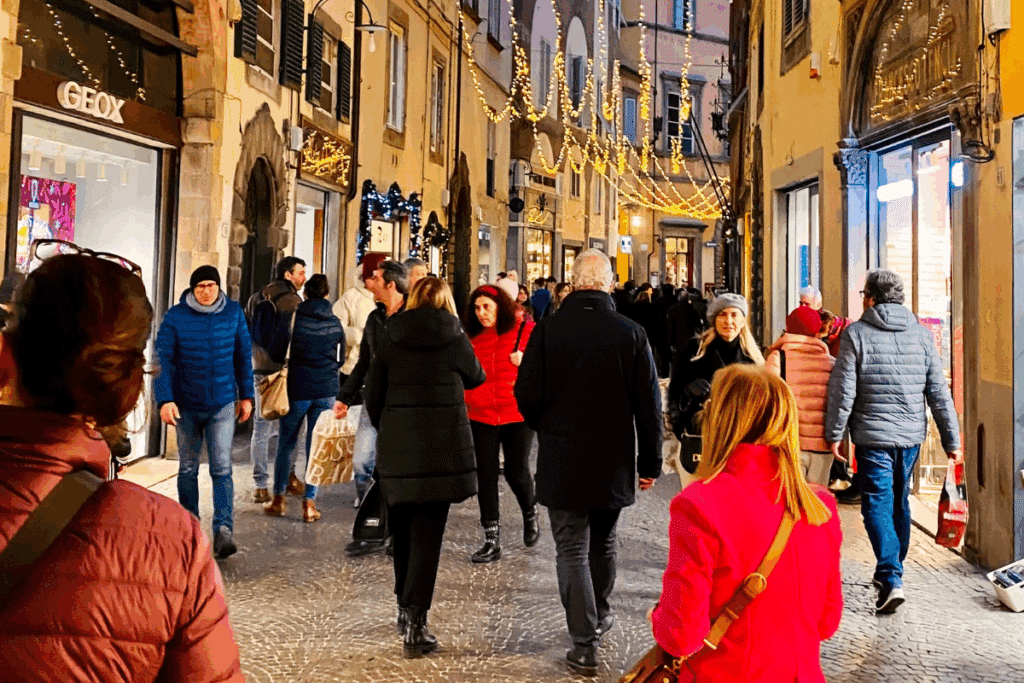
Winter is Tuscany’s secret season—when the region belongs to locals and authentic experiences replace tourist attractions. Tourist crowds vanish, prices drop dramatically, but it’s genuinely cold (3-12°C/37-54°F), with rain, fog, and occasional snow in hilltop towns.
Living here in winter, I’ve discovered that Tuscany is at it’s most authentic—barely any tourists, just life as it’s lived. This is the Tuscany I love most.
Winter requires honest consideration of cold and potentially slippery cobblestones. However, shorter walking distances, frequent café breaks, and cozy indoor experiences create a manageable rhythm if you embrace the season’s character.
Food & Wine: Prime truffle season—white truffles through December, black truffles January-March. Comfort cuisine: ribollita, pappardelle al cinghiale, bistecca by the fire. Christmas brings panforte and ricciarelli. Fresh olive oil from November’s harvest. Wine cellars offer intimate tastings without crowds.
Events: Christmas markets (genuinely local, not manufactured), living nativity scenes, New Year’s Eve fireworks, Viareggio’s Carnevale (February). The real gift is experiencing daily local life—morning café rituals, family lunch closures, weekend markets.
Best for: Authentic culture seekers | Truffle fanatics | Budget travelers | Museum lovers (no lines!) | Cozy atmosphere enthusiasts
When to Book Your Tuscany Trip
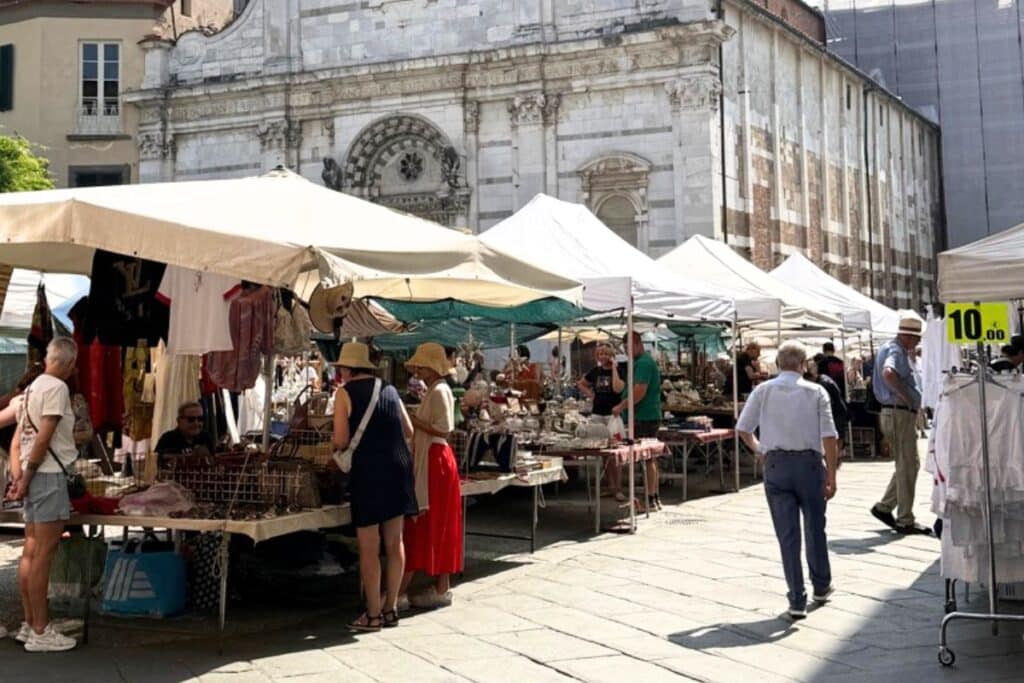
12+ months ahead: Essential for autumn harvest experiences (September-October), Easter week, and the Palio di Siena. Gives you first choice of boutique agriturismos and wine tours.
6-9 months ahead: Sweet spot for spring and summer. Good selection for accommodations, cooking classes, and private winery visits.
3-6 months ahead: Works well for winter and early spring. Some autumn availability, though best harvest experiences will be booked.
Last-minute (under 3 months): Winter offers most flexibility. Summer and autumn require more compromise.
How to Choose: Best Time for You
Spring (April-May): Comfortable weather, fewer crowds, blooming landscapes, moderate prices
Summer (June-early Sept): Guaranteed sunshine, vibrant festivals, beach access—but crowds and heat
Autumn (Sept-Oct): Ultimate food/wine experience, grape and olive harvests, perfect weather, moderate crowds—top choice for food enthusiasts
Winter (Dec-Feb): Most authentic local experience, truffle season, dramatic savings, no crowds—but cold and often rainy
Common Questions About Timing
Is Tuscany too crowded in summer?
Cities like Florence and Siena definitely are, especially July-August. Find quieter experiences by staying in smaller towns (Pienza, Cortona, Volterra), visiting popular sites early morning or evening, and choosing local agriturismos. The countryside remains surprisingly peaceful even when cities overflow.
Can I do wine tastings outside of harvest season?
Absolutely! Wineries welcome visitors year-round. You’ll often get more personal attention from winemakers in winter and spring when they’re not in harvest mode. Each season offers different insights into the winemaking cycle.
What if I have mobility concerns?
Tuscany’s medieval towns involve cobblestones, hills, and stairs—that’s their authentic charm. However, thoughtful planning makes a huge difference: ground-floor accommodations, flatter towns like Lucca, private drivers instead of trains, accessible wineries, and ample rest time. Many memorable experiences (cooking classes, wine tastings, truffle hunting, olive mills) are naturally accessible. Let’s discuss your specific needs →
Final Thoughts
Tuscany rewards visitors in every season, revealing different facets depending on when you arrive. The hills gleam green in spring, golden in summer, bronze in autumn, and misty gray in winter—yet they’re always, unmistakably, Tuscany.
The best time isn’t about perfect conditions—it’s about matching the region’s seasonal soul to your travel desires. Let that guide you, then plan thoughtfully so logistics don’t overshadow the magic.
